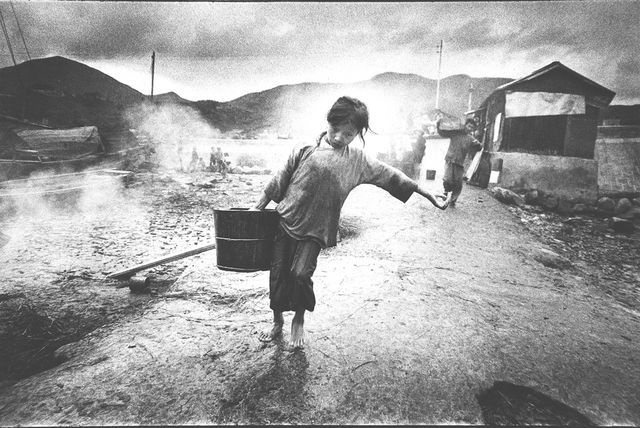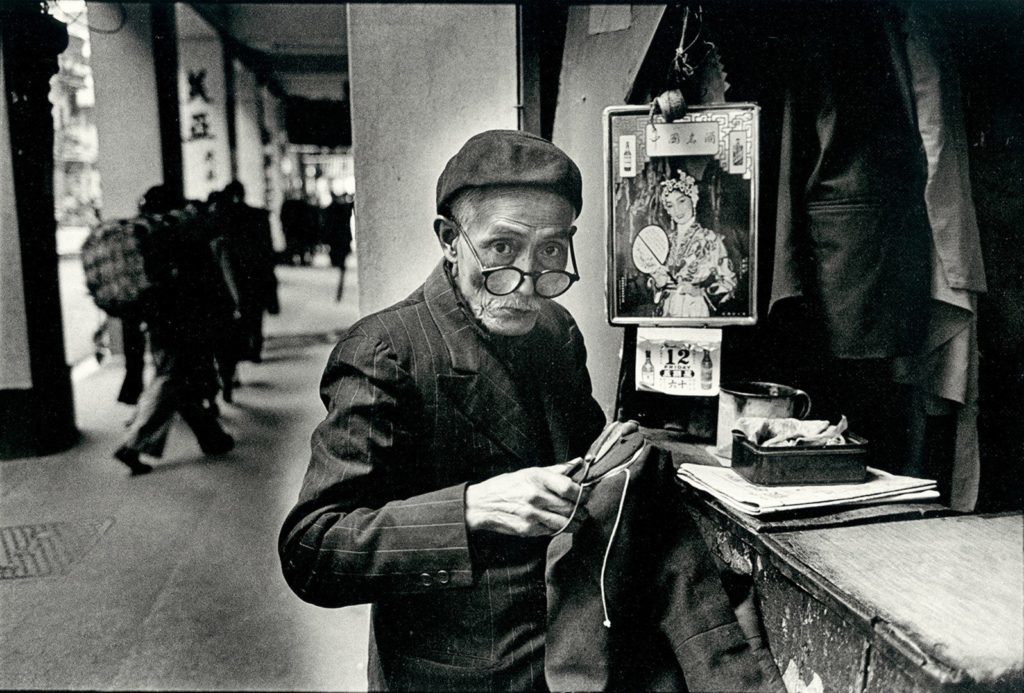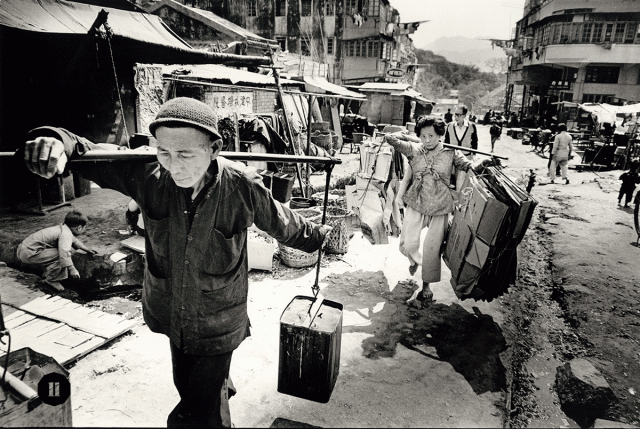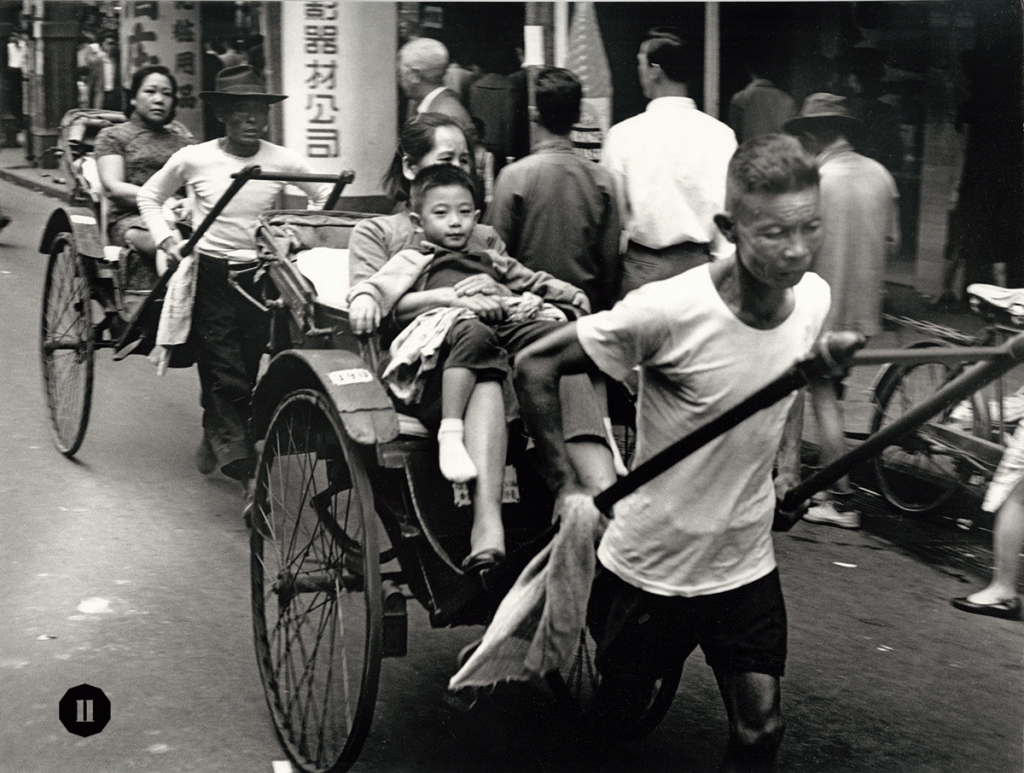- Learning from Shenzhen
- Deng Xiaoping and the Transformation of China
- The Chinese in Britain: A History of Visitors
- Chinglish, An Almost Entirely True Story
- Urban Villages in the New China: Case of Shenzhen
- Shenzheners Stories
- African Shenzhen: China’s special economic zones in Africa
- Common mental health problems in rural-to-urban migrant workers in Shenzhen, China: prevalence and risk factors
- Figuring Post-worker Shenzhen
- Ed van der Elsken
Learning from Shenzhen, China’s Post-Mao experiment from Special Zone to Model City
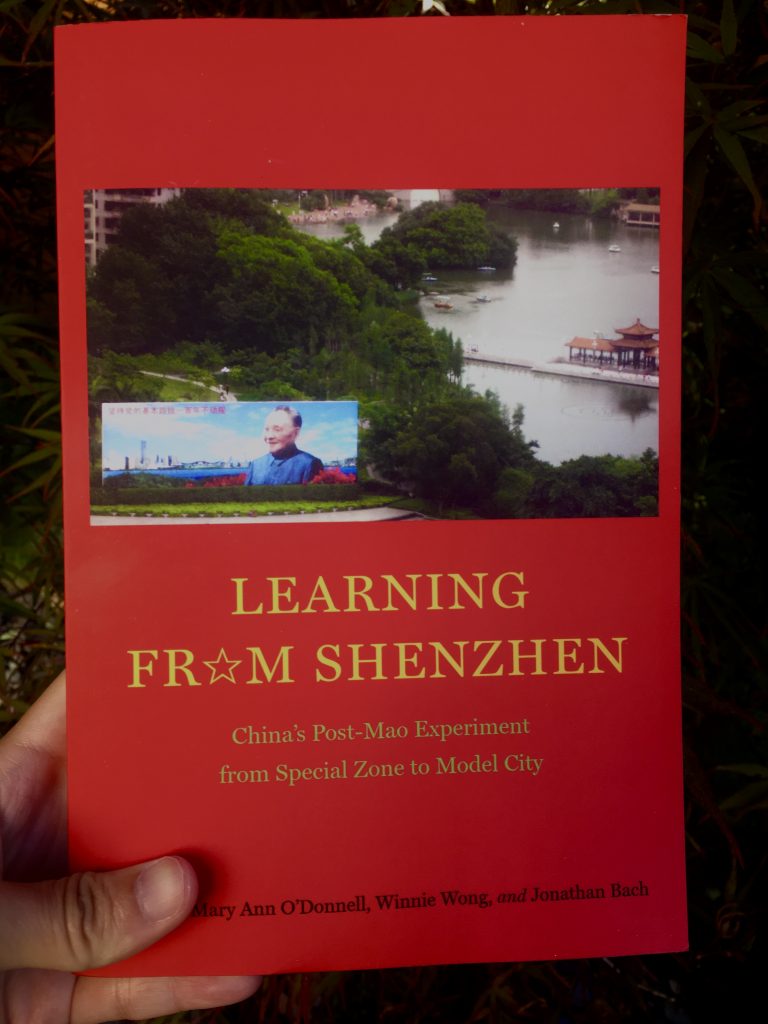
“No city in the world has ever grown as rapidly as Shenzhen, China’s southern gateway to the outside world. In 1978, when the Reform and Opening policy was introduced in China, Shenzhen was a small town of some thirty thousand people, surrounded by paddy fields. By 2010, it had a population of more than ten million people – more than New York, America’s largest city. No tall buildings were more than thirty years old. It glittered with modern stores, hotels, offices and restaurants.” – Foreword, Ezra Vogel
Deng Xiaoping and the Transformation of China

The Chinese in Britain: A History of Visitors

Chinglish, An Almost Entirely True Story

Urban Villages in the New China: Case of Shenzhen
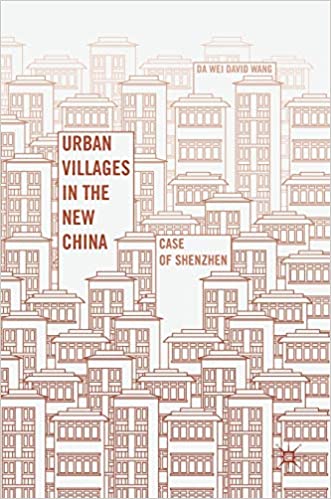
Focusing on Shenzhen as a representation of the general urban village phenomenon in China, this book considers the impact of China’s economic reform on urbanization and urban villages over the past three decades. Shenzhen’s urban villages are some of the first of their kind in China, unique in their diversity and organizational capacity, but most notably in their ability to protect village culture whilst coexisting with Shenzhen, one of the fastest urbanizing cities on earth. Providing a study of regional contrast of urban villages in China with newly collected fieldwork materials from Guangzhou, Beijing, and Xi’an, this book also considers recent developments within urban villages, including attempts at marketization of the so-called xiao chanquanfang (the quintessential urban village apartment units). It also addresses the corruption scandals that engulfed some urban villages in late 2013. Through cutting edge fieldwork, the author offers a cross-disciplinary study of the history, culture, socio-economic changes, and migration of the villages which arguably embody Chinese social mobility in an urban form. Da Wei David Wang (auth.)
Shenzheners Stories

African Shenzhen: China’s special economic zones in Africa

Common mental health problems in rural-to-urban migrant workers in Shenzhen, China: prevalence and risk factors
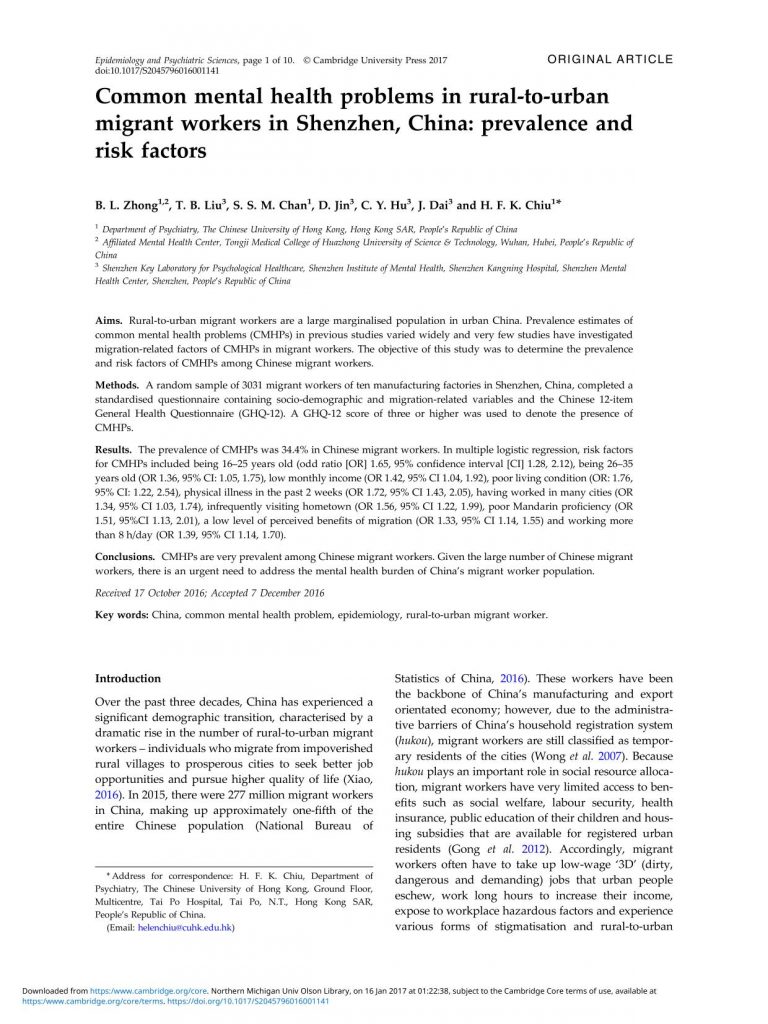
“In Global Burden of Disease Study 2013, China alone accounted for 17% of the global mental illness burden and the burden of mental illness was expected to increase by 10% in China between 2013 and 2025 (Charlson et al. 2016).”p2
“Risk factors specific to each phase would negatively influence the mental health of immigrants, i.e. early age at first migration and ‘no clear motive for migration’ before migration (Takeuchi et al. 1998; Fenta et al. 2004), exposure to violence during migration (Bhugra, 2003) and poor language skills in the host country language after migration (Mirsky et al. 2008; Im et al. 2014)”. p2
“This study was part of a large-scale cross-sectional sur- vey (Zhong et al. 2015), which investigated mental health of factory migrant workers in Shenzhen, China, between August 2012 and January 2013. Shenzhen is a modern metropolis in southeastern China. As one of the major destinations for migrants from impoverished western and central inland regions of China, it has been China’s largest migrant city with 7.8 million rural-to-urban migrants in 2012 (Zhong et al. 2015).”
“In brief, we first purposively selected ten factories (three electronic, two machinery, two shoes, two cosmetic and one garment) to represent factories of Shenzhen. Second, a total of 41 production units (2–6 units/factory) were randomly selected from the 397 production units of the ten factories. Finally, all eligible subjects of these identified units were invited to participate in this survey.”
“The seven items were: (1) Migration work improves my personal economic conditions; (2) Migration work improves my family’s economic con- ditions; (3) Migration work improves my working abil- ities; (4) Migration work gives me a good opportunity to make many friends; (5) Migration work makes me realise personal economic independence and freedom; (6) Migration work enriches my social experiences; and (7) Migration work makes me realise personal life value.”
“Results of the univariate analysis (Table 1) show that significantly higher CMHPs prevalence rates were observed among migrant workers who were young, had a low level of educational attainment, had a marital status of ‘others’, reported poor living condition, had a low monthly income, were ill in the previous 2 weeks, migrated before adulthood, worked outside hometowns for less than 10 years, had worked in five cities or more, infrequently called family members, infrequently visited hometowns, migrated alone, reported poor Mandarin proficiency, had a low level of PBM, had engaged in five jobs or more and worked more than 8 h/day, compared with their corresponding counterparts.”
“Multivariate logistic regression analysis (Table 2) revealed that young age, low monthly income, poor living condition, physical illness in the past 2 weeks, having worked in many cities, infrequently visiting hometown, poor Mandarin proficiency, a low level of PBM and working more than 8 h/day were independ- ently and positively associated with CMHPs. Taken together, these factors accounted for 27.6% of the vari- ance in the prevalence of CMHPs among these subjects.”
“The prevalence we found in migrant workers is similar to that reported among Latin American migrants of Australia (32.6%) (McDonald et al. 1996), among Romanian migrants of Spain (39.5%) (González-Castro & Ubillos, 2011) and among rural-to-urban migrants of Peru (38.0%) (Loret et al. 2012). The higher prevalence in migrant workers than Chinese general population and comparable prevalence between migrant workers and international migrants in this study support the increased risk of CMHPs in Chinese migrant workers.”
“In our migrant worker sample, as shown in Table 1, nearly two-thirds had an educational attainment of junior high school or below, about 50% were unmarried, over 70% had a monthly income of 599 USD or lower (lower than 50% of the average monthly income of urban residents), approximately 80% worked more than 8 h/day and nearly 40% migrated alone.”
“Perhaps there are particular pres- sures on young migrant workers arising from estab- lishing new careers and adapting to the new environment, often without support of parents and the extended family. There is evidence that a low socioeconomic status is associated with poor mental health (Muntaner et al. 2004; Lund et al. 2010); this is in accordance with our findings that migrant workers who had a low monthly income and poor living condi- tion had higher prevalence of CMHPs.”
“In the current study, infrequent visit of hometown was a risk factor for CMHPs. Because migrant workers are largely isolated from the mainstream of urban society (Zhong et al. 2015), family is the main available source of support for them when facing difficulties, though they work in remote cities.”
“Our study revealed that having worked in many cities was positively associated with CMHPs. As number of cities that migrant workers have worked in could be regarded as a measure of their mobility, this finding resembles the notion that high mobility is a risk factor for poor men- tal health of migrants (Ismayilova et al. 2014).”
“Similar to earlier findings in international migrants (Furnham & Li, 1993), migrant workers with difficul- ties in Mandarin were more likely to have CMHPs in this study. China has many dialects, migrant workers from various parts of China speak different dialects. Owing to their low level of education, migrant workers often have difficulties in speaking fluent Mandarin and have to face many barriers such as problems in commu- nication and making friends, which further increases the possibility of developing CMHPs.”
Figuring Post-worker Shenzhen
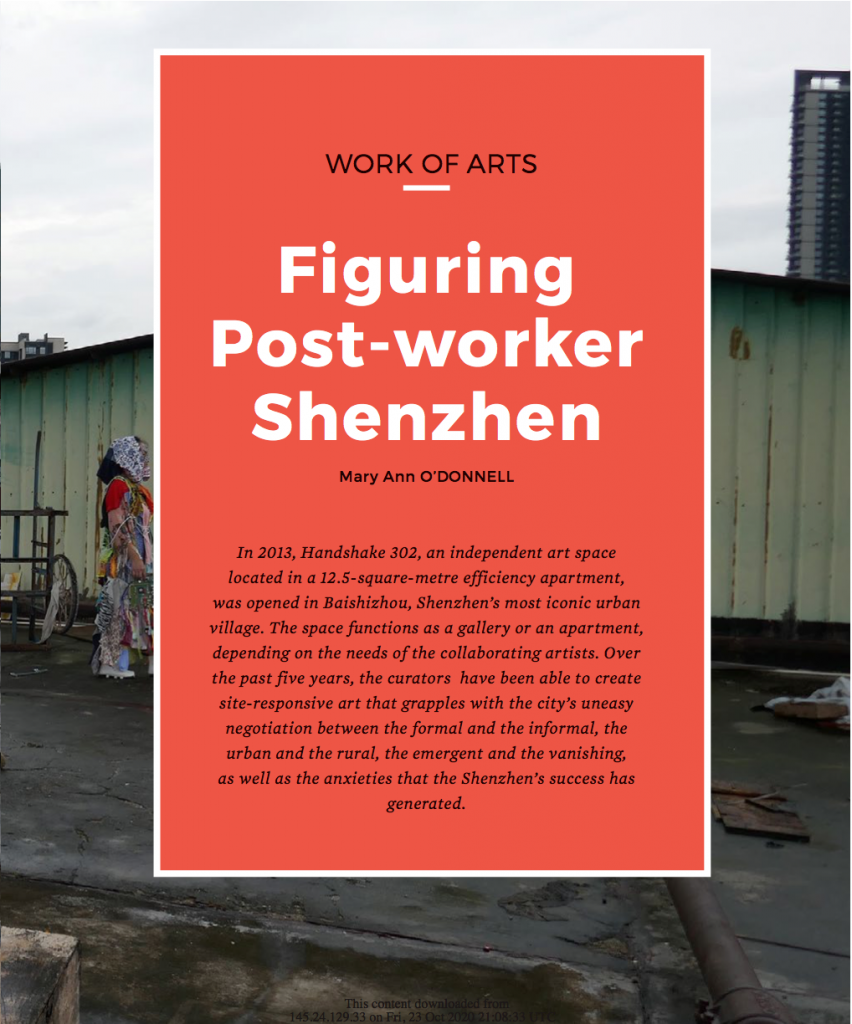
Ed van der Elsken
